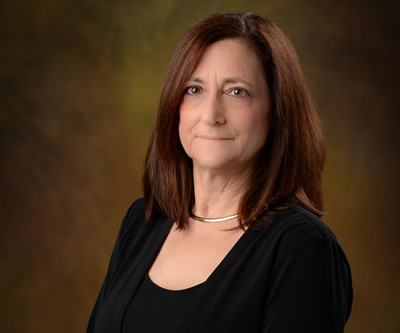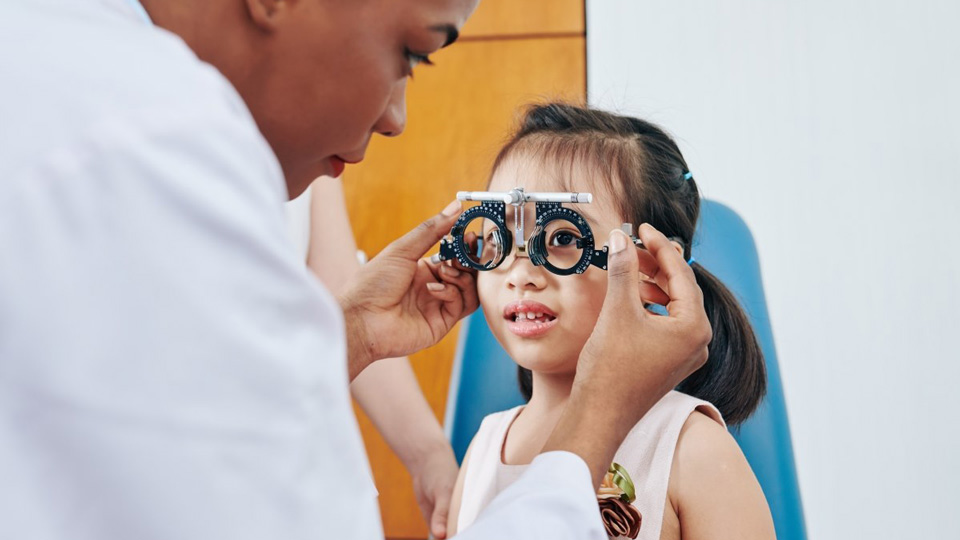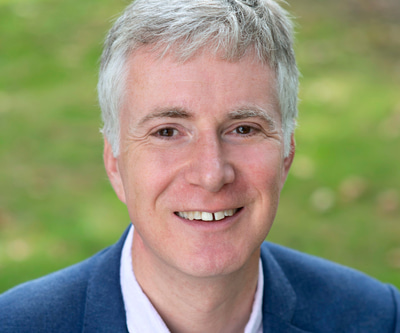- OT
- Professional support
- Optical organisations
- Towards a “world where no one experiences unnecessary or preventable sight loss”
Towards a “world where no one experiences unnecessary or preventable sight loss”
OT asked organisations across optometry for their reflections on eye health as part of the WHO’s World Health Day theme: Health for All

Health for All is the core theme behind the World Health Organization’s (WHO) 2023 World Health Day, to be held on Friday 7 April.
Established to commemorate the founding of the WHO in 1948, the 2023 anniversary also marks the 75th year of WHO.
The organisation shared that the 75th anniversary represented an opportunity to “look back at public health successes that have improved quality of life during the last seven decades,” as well as “to motivate action to tackle the health challenges of today – and tomorrow.”
Marking the milestone, the WHO is calling for a renewed drive for health equity, sharing that: “a renewed commitment to health equity will be the key to addressing future health challenges.”
“In the shadow of the COVID-19 pandemic, WHO’s roadmap to recovery includes an urgent paradigm shift towards promoting health and wellbeing and preventing disease by addressing its root causes and creating the conditions for health to thrive. WHO is urging countries to provide health by prioritising primary health care as the foundation of universal health coverage.”
Dr Tedros Adhanom Ghebreyesus, WHO director general, said: “We have much to be proud of, but much work to do to realise our founding vision of the highest attainable standard of health for all people.
“We continue to face vast inequities in access to health services, major gaps in the world’s defences against health emergencies, and threats for health harming products and the climate crisis. We can only meet these global challenges with global cooperation.” In recognition of the landmark year for the WHO, OT reached out to organisations across optometry and optics for their reflections on eye health as part of the Health for All message.
Eye health in the spotlight
Dr Sandra Block, president-elect of the World Council of Optometry

“Further discussion of universal health emphasised how vision issues are integrated in multiple Sustainable Development Goals and subsequently, the call to improve quality of life and improved access, affordability, equity, and equality of health services.
“WCO wants to help integrate optometric care as a core part of the team approach which will ensure that everyone has access to all of the health care that allows them to reach their full potential.”
WCO wants to help integrate optometric care as core part of the team approach which will ensure that everyone has access to all of the health care that allows them to reach their full potential

Matjaž Mihelčič, president of the European Council of Optometry and Optics (ECOO)
“It is ECOO’s mission to improve eye health and vision for all and we believe that primary eye care professionals, such as optometrists and opticians, are essential to achieving this by ensuring timely and accessible eye care.
“The WHO has recognised the importance of vision in its World Report on Vision in 2019, through which it sets the global agenda on eye health and access to quality eye care. The report also highlights that the optometric profession is, unfortunately, still not recognised in many countries, notwithstanding the progress made on the training standards for optometrists, optometric technicians and optical technicians.
“Across Europe, optometrists and opticians are usually the first point of contact for people to maintain good vision and eye health. And as a result of the COVID-19 pandemic we have seen an increased awareness of the important role these primary eye care professionals play, as they not only continued to provide important eye care services to the population but in many cases stepped up and took on additional roles to support health systems.
“We are encouraged by the progress that has been made in many countries in making the best use of the skills of optometrists and opticians. But ECOO wants all policy-makers to be abreast of and act on the importance of improving eye health for all, to appreciate the economic and social need to eliminate avoidable sight loss, and to make full and effective use of all the health resources available to do so.”
ECOO wants all policy-makers to be abreast of and act on the importance of improving eye health for all, to appreciate the economic and social need to eliminate avoidable sight loss, and to make full and effective use of all the health resources available to do so
Peter Holland, chief executive of the International Agency for the Prevention of Blindness (IAPB)

“Both the Sustainable Development Goals (SDGs) and the Universal Health Coverage agenda will not be achieved unless everyone works together to embed and scale up eye health in health systems to reach those most in need.
“As together we mark the 75th Anniversary of the WHO and celebrate its achievements, we must re-double our efforts to reach the ambitious eye health targets for 2030. As the Lancet Global Commission on Global Eye Health showed, improving access to eye health services is critical to achieving many of the Sustainable Development Goals.
As we mark World Health Day with the call to action of Health for All we know our collective aim in the sight sector is a world where no one experiences unnecessary or preventable sight loss
Carolyn Ruston, policy director at the AOP
The Health for All theme for this year’s World Health Day sits alongside the 75th anniversary of WHO, founded in 1948, and which brought countries of the world together to promote health and collectively improve the health and wellbeing of our citizens. It is also the year where we will celebrate the 75th birthday of our remarkable NHS.
Population health and health prevention is a key focus of our health systems in the UK, given our ageing population and increasing long term health issues caused by lifestyle and other social determinants of health and wellbeing. As recently as this week, for example, in England the Hewitt review of integrated care systems (ICSs) recommended a shift from focussing on illness to promoting health, and sets out opportunities to unlock the potential of the primary (and social care) workforce.
Within the AOP we have been working with sector and wider health colleagues to ensure a greater parity of esteem of primary care professions, not just a focus on general practice. The work we are doing looks at the vital role optometry plays in realising good eye health across the whole of the life course with a particular focus on those patients who are hard to reach in terms of accessing primary eye care, and health services more widely.
Many of you will have seen our latest campaign Sight won’t wait, that sets out in stark terms the current eye health crisis in ophthalmology caused by waiting times and workforce shortages. Optometrists up and down the country are ready and waiting to solve this crisis in UK eye care. This is also the reason the AOP, a partner of The Eyes Have It coalition, are supporting Marsha de Cordova MP, in the call for a national plan for eye care.
To add your support to this campaign we are encouraging members to contact their MP, sharing our briefing on the current crisis.
The charity perspective
Kate Gannon, head of programme funding at Orbis UK
What does Health for All mean to Orbis?
Health for All for Orbis means ensuring our services are accessible across a range of barriers people might face in accessing quality eye care. For instance, we provide comprehensive services in remote locations so local people can use them without incurring prohibitive travel costs or wage loss. In India and Bangladesh, our women-led vision centres help women and girls access services without need for a chaperone. We are also growing the use of telehealth so that patients can talk to an eye doctor remotely, with travel provided if further treatment is required for more complex needs.
How do you think eye health as part of the global agenda has evolved?
Traditionally eye health was left out of government health programming. But health programmes at all levels now increasingly incorporate eye health including at Primary Health Care Centres and within schools. Sustainable Development Goal (SDG) 3 – Good health and Wellbeing - affects many other SDGs such as quality education, poverty reduction, economic growth, and inequalities including gender. Orbis research shows that children benefit economically from receiving glasses every bit as much as adults – a US$2 [approximately £1.60] pair of glasses significantly improved children’s academic performance in a Chinese trial, with a greater impact than either parental education or family income.
A US$2 pair of glasses significantly improved children’s academic performance in a Chinese trial, with a greater impact than either parental education or family income
Where would you like to see eye health, as a key component of Health for All, go next?
Technology can bring real advancements in eye health. Artificial Intelligence (AI) can speed up the time it takes to get a diagnosis and be more accurate than a human, as evidenced by Orbis’s diabetic retinopathy work in Rwanda. This makes services cheaper and quicker which in turn increases the likelihood of people following up on treatment. The digitisation of manual patient record systems also supports more integration of eye health with other specialities such as endocrinologists for diabetes and paediatricians for retinopathy of prematurity.
Donna O'Brien, policy, public affairs and research manager at SeeAbility
What does Health for All mean to SeeAbility?
In ‘health equity speak’ you might have heard of the Inverse Care Law – those most in need suffering a mismatch in the health services they can access. For people with a learning disability, the impact of these health inequalities is profound.
Six in ten people with a learning disability die before the age of 65 in England, and almost half of those deaths are preventable.
We also know that tens of thousands of people with learning disabilities are missing out on simple, low cost eye care that could transform their lives and save their sight, despite being ten times more likely to have a significant visual problem. Health for All is a chance to talk of our commitment to help transform eye care for people with learning disabilities. Our passion is making inclusion a reality and helping people to be able to see is a huge part of that.
How do you think eye health as part of the UK health agenda has evolved?
We often say our work is based on getting eye care into learning disability policy as much as vice versa, and we do feel awareness of the eye health issues in this patient group is on the increase, with our Eye Care Champions programme, employing people with learning disabilities and autism, reaching out on the ground (and of course virtually too) to many thousands of people with learning disabilities, their supporters and professionals, with the message of being ‘eye care aware’.
However, the majority of our work is in England and we won’t be the only organisation bemoaning the lack of a national eye health strategy and the constant reorganisations in the NHS. This and the way in which the sight testing system is funded means it’s been hard to secure fail-safe services that target this patient group.
Even the NHS Special Schools Eye Care Service, created and launched because the majority of children with the most severe learning disabilities (and so at highest risk of sight loss) attend special schools, appears to be under threat. This would be a travesty: in terms of improving health equity and removing barriers, you couldn’t get a better example. 40% of the children will have never had any eye care. And there are thousands of children now making use of the NHS Special Schools Eye Care Service who might otherwise be under hospital care.
We won’t be the only organisation bemoaning the lack of a national eye health strategy and the constant reorganisations in the NHS
Where would you like to see eye health, as a key component of Health for All, go next?
Like everyone, we support the case for a national eye health strategy for England and share the determination for policy-makers to ‘join the dots’, invest in early eye care given its value for money, support the workforce, and sort out the current postcode lottery in pathways of support.
It is about equity too, and we’re absolutely determined to see the NHS Special Schools Eye Care Service succeed so it is available to special schools across the country. As health and social care morph into new Integrated Care Systems, the opportunity of a community eye care pathway for people with learning disabilities, in every area, should be taken.
The pandemic has had a devastating impact on the health inequalities people with learning disabilities experience, while children with special educational needs and disabilities still haven’t got back the vital therapies and healthcare support they need. Hospital eye clinics are the busiest they have ever been, with waiting lists growing, and there is no doubt that people with learning disabilities will be falling through the cracks. A simple change to eligibility criteria for NHS sight tests to include a learning disability category would be a welcome move in prioritising this patient group.
This is the time to be ambitious so children and adults with learning disabilities get the sight tests and preventative eye care they need, as everyone deserves an equal right to sight.
The pandemic has had a devastating impact on the health inequalities people with learning disabilities experience
Anne Buglass, director of programmes and interim CEO for Vision Action
What does Health for All mean to Vision Action?
Health for All means we must continue to strive to achieve our mission to reduce vision impairment, through achieving universal access to affordable eye care and glasses.
We will do this through continuing to adopt the three key approaches identified in our strategy to 2030:
- Supporting the development of Human Resources for Eye Health (HREH)
- Strengthening essential eye health services
- Engaging and mobilising communities.
Critical to this will be the integration of eye health into primary health care, school health and nutrition and the health system as a whole, as well as exploring financing mechanisms such as insurance schemes. We must leave no one behind in terms of gender equity and inclusion, and we must strive to reach the poorest communities.
How do you think eye health as part of the global agenda has evolved?
It has evolved slowly but systematically, as evidence of need has become too compelling to ignore. Now, endorsed by WHO, the United Nations, and the Lancet, as well as all eye health agencies and nearly all governments, it is starting to get greater attention. However, there is still such a long way to go before eye health services are available and accessible to all.
There is still such a long way to go before eye health services are available and accessible to all
Where would you like to see eye health, as a key component of Health for All, go next?
Vision Action supports the WHO’s World Report on Vision, which illustrates how making eye care integral to Universal Health Coverage (UHC) will contribute to reaching the Sustainable Development Goals (SDG), with the following recommendations for adoption by countries:
- Make eye care an integral part of universal health coverage
- Implement integrated people-centred eye care in health systems
- Promote high-quality implementation and health systems research, complementing existing evidence, for effective eye care interventions
- Monitor trends and evaluate progress towards implementing integrated people-centred eye care
- Raise awareness and engage and empower people and communities about eye care needs.
To do this, it will be important to emphasise the economic arguments: $14 billion [approximately £11 billion] to create a world free from uncorrected refractive error, while the annual cost of uncorrected poor vision in terms of lost productivity is estimated at $272 billion [approximately £218 billion].
Strategic partnerships with natural allies in areas such as noncommunicable diseases, education, and paediatrics, must be forged. Systematic data collection will be critical for planning and advocacy, as will a focus on integration and the reduction in disease-specific and parallel programmes.
Advertisement



Comments (0)
You must be logged in to join the discussion. Log in